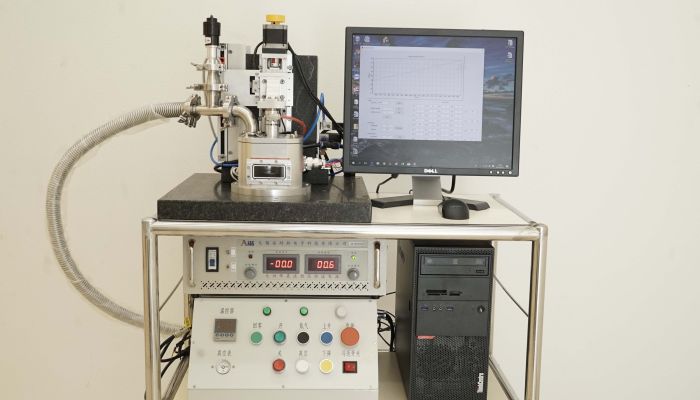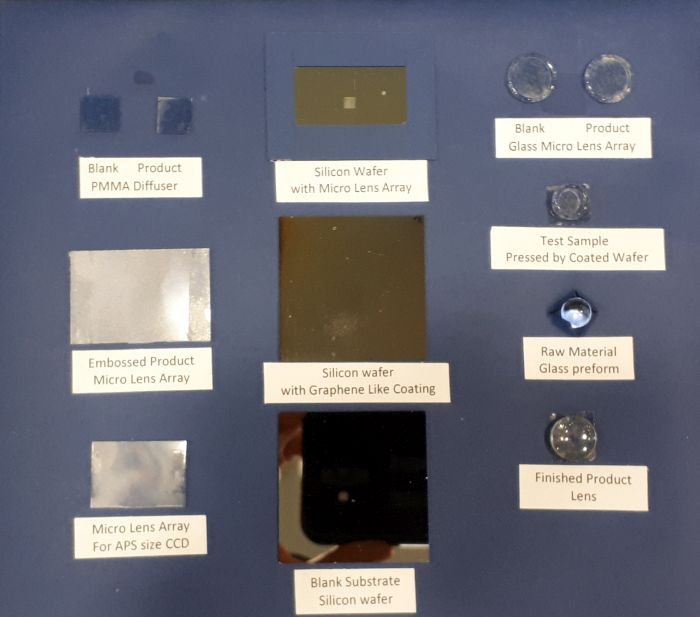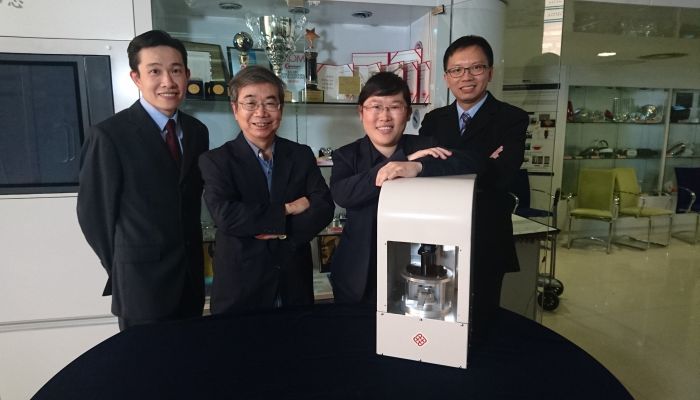2018.06.13
The Hong Kong Polytechnic University (PolyU) has developed a novel micro-embossing equipment for manufacturing precision glass lenses with high image quality and resolution required for state-of-the-art optical instruments and devices in varied fields – from astronomy, national defence, medical scanning, to consumer products such as cameras and mobile phones. The invention can emboss ultra-precise optical microstructures in glass in a much environmentally friendly way than conventional machines, saving electric power by 60 times and reducing manufacturing cost by two-thirds.
Developed by PolyU researchers from the Partner State Key Laboratory of Ultraprecision Machining Technology, the invention was awarded a Gold Medal at the 46th International Exhibition of Inventions of Geneva 2018. The research supported by the Innovation Technology Fund has also been granted with eight patents.

Prototype of the micro-embossing equipment for precision optical microstructures
Glass optical components are difficult to fabricate as it requires much higher molding temperature and extremely hard-to-machine carbide materials to make the mold, compared with plastic molding. It is also difficult to emboss micro-nano optical elements with micron-sized glass microstructures (1 micron = 1 of 1 million parts of a metre). However, with surging demand for powerful lens of small size and high resolution in advanced optical systems nowadays, there has been mounting need for using optical glass to replace optical polymers, which has much lower transmittance. Taking DVD high-definition optical pickup lens as an example, the feature size is as tiny as 0.9 micron. If conventional lithography method is used for mass production, the equipment set up cost will be high, yet the lens produced will have precision much lower than those obtained from molding or embossing. Nowadays, China has the highest output of optical lenses in the world. Yet, due to technological limitation for producing high-end lens, its total market value is still lower than Europe and Japan.
The research team led by Professor LEE Wing Bun and Dr LI Lihua from PolyU's Department of Industrial and Systems Engineering has adopted a novel molding design with graphene-like coating and self-developed heating technology to produce the micro embossing equipment that can produce micron-level microstructural optical components in glass. Compared to conventional bulky infrared heating device with large energy consumption, the novel technology is much environmentally friendly and cost effective.
The use of graphene-like coating can heat up the optical glass precisely and quickly with low energy consumption, while reducing thermal expansion and deformation of the mold. The control and monitoring software developed can also provide online and instant readings of the temperature, which allow fine-tuning and adjustment of the process parameters, and thus shorten the cycle time. Such novel features enable saving electric power by up to 60 times, compared to conventional infrared machines, and cutting the manufacturing cost by two-thirds. Being an electrical conductive material with high wear characteristic, graphene also enables smooth stripping of the glass workpiece from the mold after the embossing process. Furthermore, micro-pattern with micron accuracy can be replicated on the glass substrate.

Glass micro lens and micro-lens array produced by the novel technology developed by PolyU
The novel embossing equipment can have wide applications in opto-electronic products, including cell phone micro-lenses, camera lenses, DVD pickup lenses, micro shuttle lenses, f-theta lenses for laser printers, projection television magnifiers, optical communication V Gutter substrate, micro-lens array (MLA), and Frensel lens for collecting and tracking solar energy. In light field optics, the new applications of great potential include 3D camera heads, three-dimensional robotic vision systems, as well as lens for long-range shooting, detection of low-altitude drones and security monitoring.













